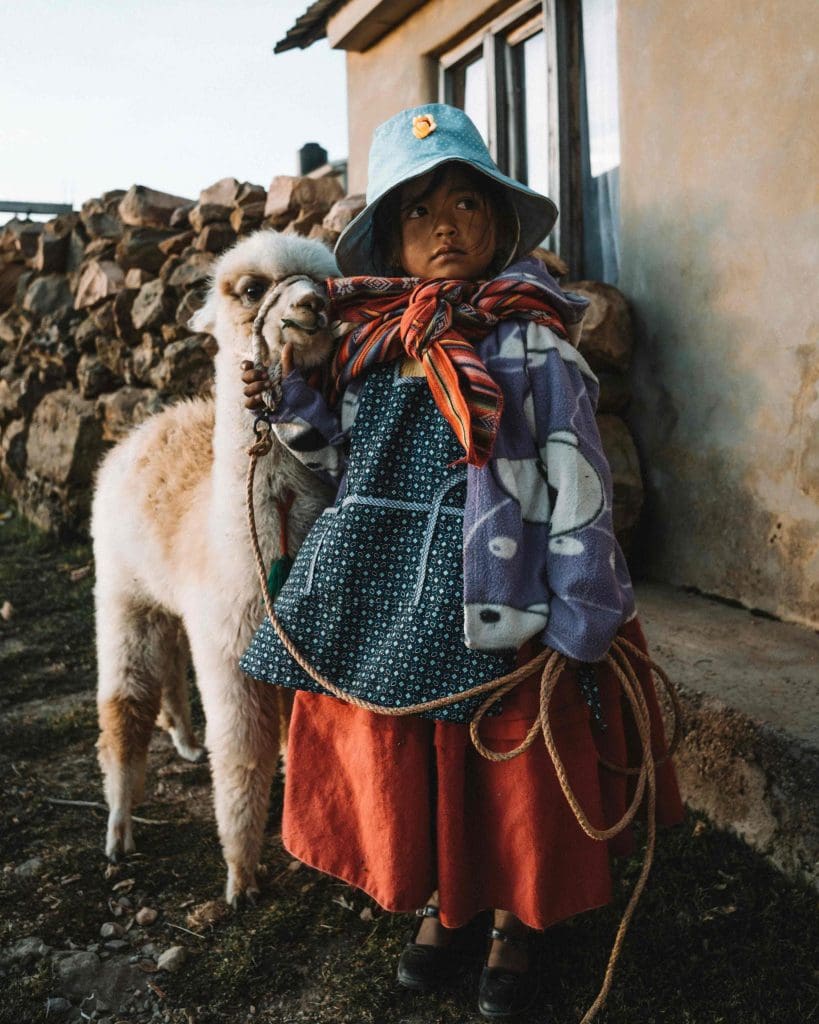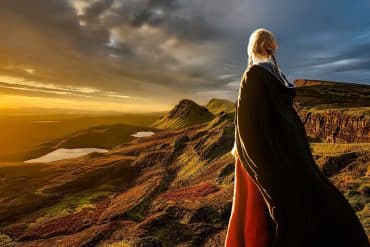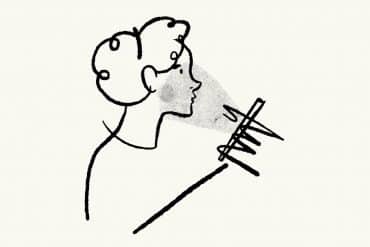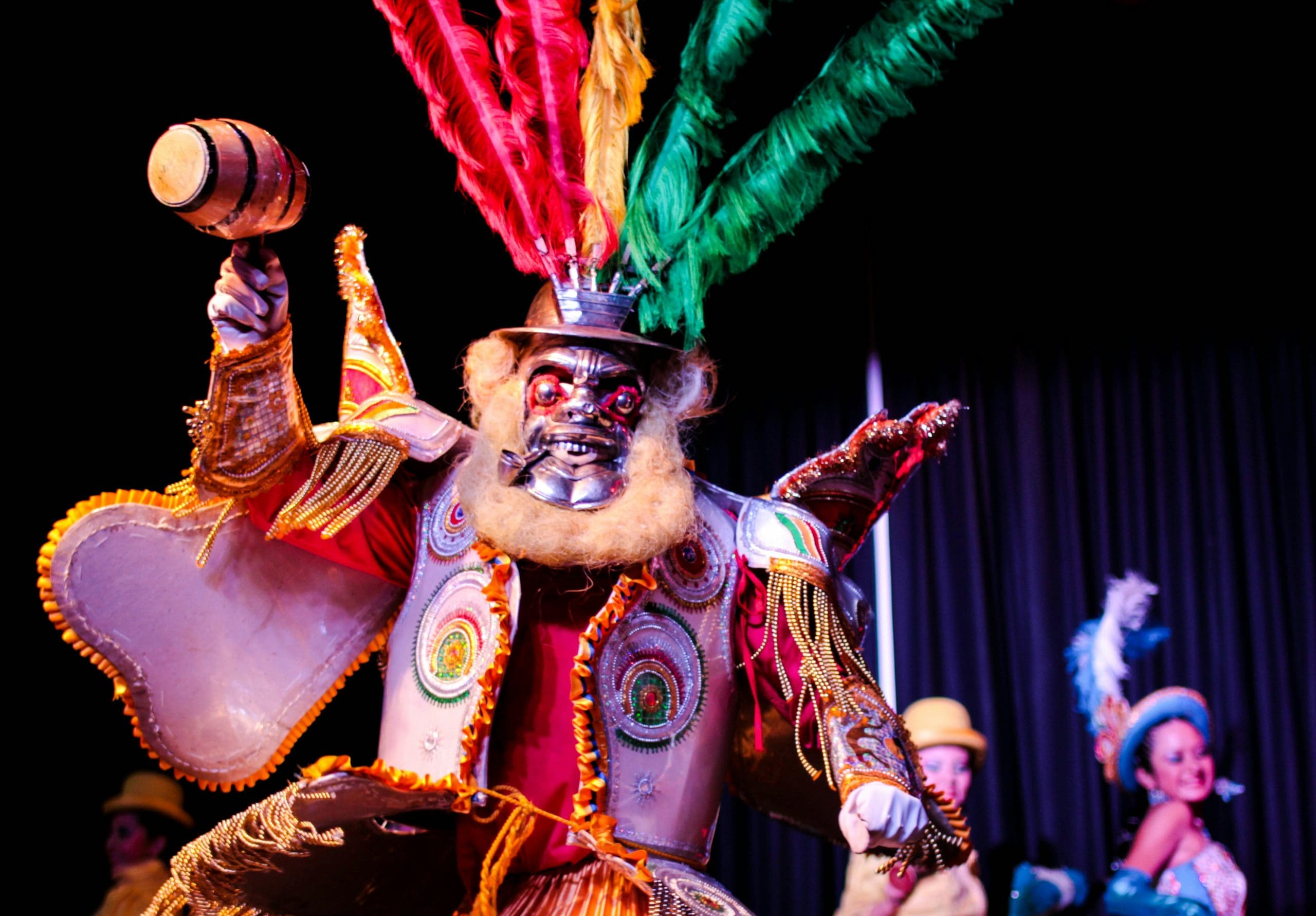The Road To Hell: Monstrous Ethnographies and Research Extraction
Author’s Memo
This piece is a creative reflection which emerged out of the auto-ethnographic reflections from my PhD around research extraction and the figure of the white researcher/do-gooder in Latin America. The encounter narrated precedes my PhD by 12 years, though I only came to understand the significance of the exchange while researching monstrous ethnographies and research extraction. This piece is part travel-log, part folklore, part CNF and part autoethnography focusing on the mythical figure of the Kharisiri from Bolivia and what it can tell us about out roles as researchers.

By the time the young woman appeared around the bend, my friends and I – the volunteer, the teacher and the sociologist, all gringos – had been sitting on the grassy verge of a deserted cobbled highway in central Bolivia for two hours. As we watched the distant hills turn from a glaring yellow to a deep umber we had begun to worry we if we would be spending the night camped on that grassy verge.
‘This piece is a creative reflection which emerged out of the auto-ethnographic reflections from my PhD around research extraction and the figure of the white researcher/do-gooder in Latin America.
The woman stopped a short distance from us but a curt ‘Buenas tardes’ was her only acknowledgement of our presence. No one else had passed along that road in hours so, despite her apparent reluctance to engage with three strangers, we leapt to our feet and assailed her with questions in garbled Spanish about how we could get to Incallajta. She had little information to offer except to say we wouldn’t make it there on foot by nightfall. She did concede that she was waiting for a bus to the next village and we decided we should probably do the same. We tried to make conversation, but she did not seem particularly interested in our lives and after a few attempts to pry into hers, we gave up.
She did, however, tell us about the Kharisiri. Surprised we had never heard of such a thing, for it was popular and well known in those parts, she began to describe a fat-guzzling monster who roamed the hills at night looking for lonely travellers to prey on. I laughed and explained how in Ireland we also had many myths about fairies and other supernatural creatures who liked to play tricks on people.
‘The Kharisiri is real,’ she said, frowning. ‘Not a myth. You should be careful if you plan to stay too long around here, it might come after you.’
‘The encounter narrated precedes my PhD by 12 years, though I only came to understand the significance of the exchange while researching monstrous ethnographies and research extraction.
I smiled, a little less sure this time, and said we would keep it mind. It was not the first time I had heard of supernatural beings in my travels through the Southern Cone. However, a monster who sucked the fat from its victim’s bodies, leaving them weakened, but not dead, was a particularly perturbing image.
The camping trip to Incallajta had been my idea. Incallajta is an Incan ruin within two hours of the city the three of us had called home for the previous six months: Cochabamba. Though one of the most significant military, administrative and spiritual outposts of the Incan empire in the region, Incallajta did not have the fame of Machu Pichu and merited only one paragraph in the ‘Places to See Around Cochabamba’ section of my guidebook. The dial-up at a local internet café provided us with a few rudimentary details from random travel blogs, complemented by titbits from local guides and advice from friends who had already made the journey.
We set off on a Friday morning with a hand drawn map and lots of enthusiasm. Buying up the back seat of a colectivo taxi for ourselves, we stuffed the boot with our rucksacks, while a family of three piled into the passenger seat next to the driver. The taxi trundled off southeast, passing through the deserted dusty squares of colonial-era adobe villages, until we reached the drop-off point at Pocona. Incallajta was meant to be a two-hour walk from there.
‘This piece is part travel-log, part folklore, part CNF and part autoethnography focusing on the mythical figure of the Kharisiri from Bolivia and what it can tell us about out roles as researchers.
Hauling our rucksacks, complete with tents, sleeping bags, mats, stoves and enough food for three days, onto our shoulders, we headed east out of the village. It was hard going over the cobbled stones, at 8000 feet above sea level and with 30 pounds on our backs. We walked all afternoon, stopping only briefly for lunch, but by 4pm it was becoming increasingly clear we were lost. There was no such thing as Google maps to provide us with our location and none of us had a cell phone with which we might have called someone for further instructions or advice. Our exchanges became increasingly snappy as we contemplated giving up and hitching our way back to the city.
It was dusk when the woman’s ride finally trundled around the corner. It was not a bus, but one of the many trucks that crisscross the Bolivian altiplano, carrying their human and animal cargo to villages where few other modes of transport can go. We climbed on behind the woman and amused smiles from the cluster of people sitting among boxes of produce and crates of clucking chickens met us.
‘The Kharisiri is real,’ she said, frowning. ‘Not a myth. You should be careful if you plan to stay too long around here, it might come after you.’
We bounced along the cobble stones for twenty minutes or so, clinging onto the wooden slats lining the side of the truck to keep our balance and avoid stumbling onto either people and animals. It was dark by the time we got to the village. We found a man with a taxi and negotiated the fare to Incallajta, less than an hour’s drive away. The road up to the ruins was little better than a dirt track but the battered Toyota Corolla managed the ascent. He deposited us at our campsite sometime after 10pm and, having learned our lesson, arranged for the same driver to pick us up on Sunday and drive us back to Pocona.
Alone in the mountains we pitched our tent by torch light, boiled water for tea, shared a joint and tried to sleep. In the dark of our tent, ears full with the buzz of crickets, my mind kept drifting back to the Kharisiri. The image of a clawed and shadowy creature, skulking through the hills, lusting after my cellulite, lingered at the edges of my unconsciousness and haunted my dreams.
At sunrise the next morning all three of us were alive and intact. We spent a lazy day or so wandering around the complex of some 40 buildings, shading ourselves under the terracotta coloured stone, walking to waterfalls and climbing the surrounding hills in complete solitude. Neither huthe spirits of the Incas, nor the Kharisiri bothered us. Our return to the city was blissfully uneventful and the tale of the Kharisiri became an almost forgotten footnote to our anecdotes of a weekend among the ruins.
‘ Neither huthe spirits of the Incas, nor the Kharisiri bothered us. Our return to the city was blissfully uneventful and the tale of the Kharisiri became an almost forgotten footnote to our anecdotes of a weekend among the ruins..
14 years later, however, while reading up on critical research methodologies for my PhD, I came across an article on the Kharisiri. A gringo researcher who spent many years in Bolivia, explains how the Kharisiri is invoked by indigenous Bolivians to alert each other to the presence of whites, gringos and other outsiders who have, over five centuries of colonial and neo-colonial enterprise, sucked the life-force out of the peoples of the Altiplano. It is us Gringos, and the powers bestowed by our lack of melanin, who are feared as monsters for extracting knowledge, wealth and flesh from those territories.
I finally understood the oblique roadside warning: the young woman was trying to let us know that we were the Kharisiri and were not welcome in those parts. Generations of Kharisiris, looking just like us, had roamed those territories on paths they claimed were paved with good intentions, taking what they could and leaving devastation in their wake. Neither our innocent plans for a weekend camping trip, nor our supposed Monday to Friday do-gooding in the nearby city, meant anything in the face of this 500 year legacy.
Credits
Featured image By Andrea Huls Pareja for Unsplash
Image by Alex Azabache for Unsplash
Learn More
New to autoethnography? Visit What Is Autoethnography? How Can I Learn More? to learn about autoethnographic writing and expressive arts. Interested in contributing? Then, view our editorial board’s What Do Editors Look for When Reviewing Evocative Autoethnographic Work?. Accordingly, check out our Submissions page. View Our Team in order to learn about our editorial board. Please see our Work with Us page to learn about volunteering at The AutoEthnographer. Visit Scholarships to learn about our annual student scholarship competition









